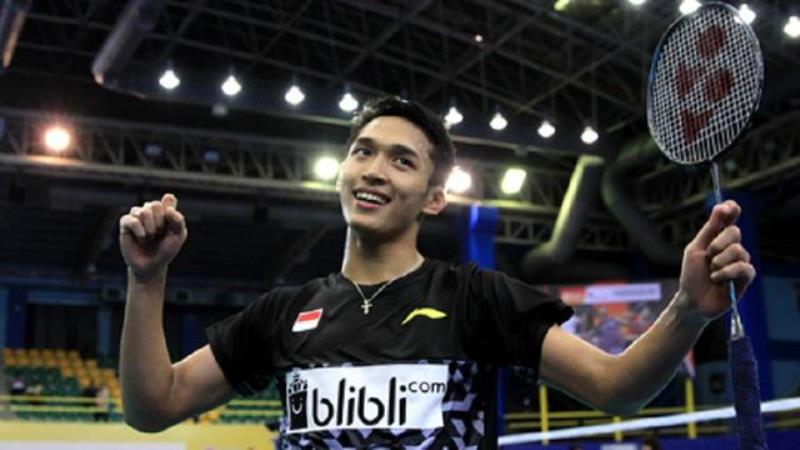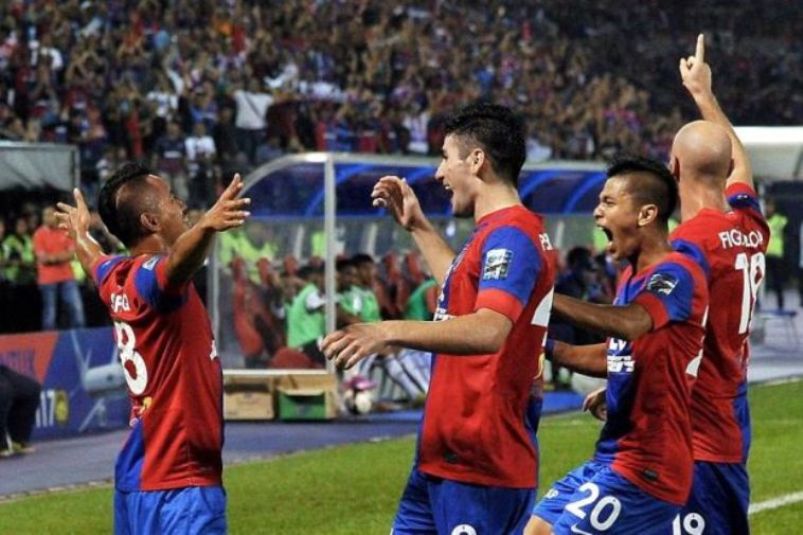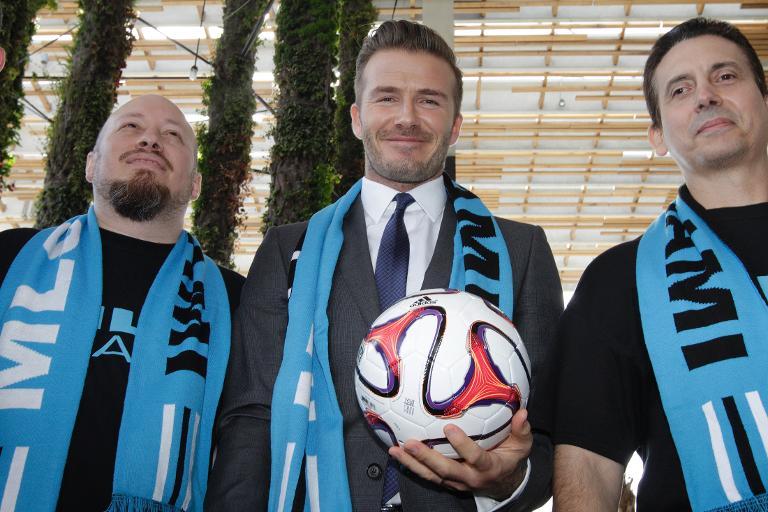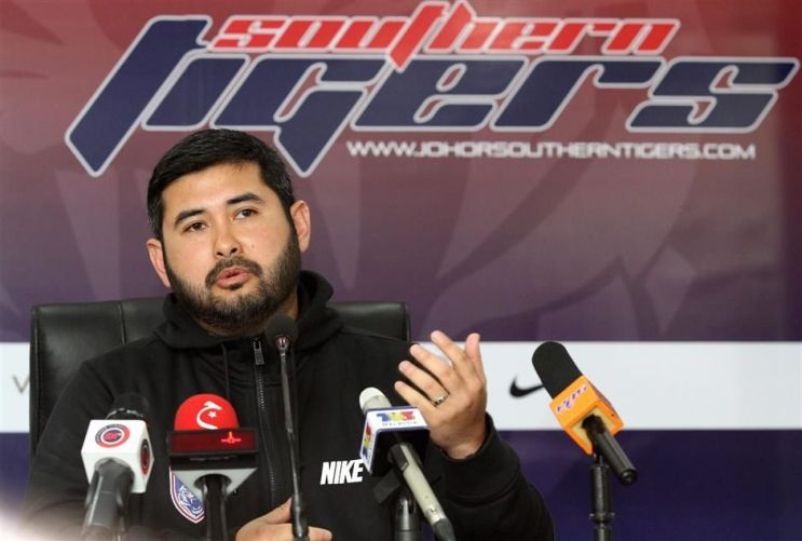
By Suresh Nair
Welcome to the extraordinary football world of Johor DarulTa’zim FC, also simply known as JDT, where I had the privilege of a recent three-hour tour, courtesy of Australian-born Sporting Director Alistair Edwards.
And this the first part of a three-part series of a world-class football infrastructure of the magnitude of Real Madrid or Manchester City, right at your backyard, in the southern Malaysian state of Johor.
As a die-hard football-fanatic Singaporean, I have to take my hats off to JDT, founded in 1972. It has gone through mammoth transformation, especially the past three years, in stadium, training and overall infrastructure facilities that it ranks as the regional role-model of a “kampong” club that is now finding its longer-term feet to rise to fairy-tale promotion.
And in the second part (tomorrow), the feature highlights how a global state-of-the-arts football formula led to its Cinderella-styled victory in 2015 as the AFC Cup champion. JDT, in giant-killing fashion, beat Tajikistan’s Istiklol 1-0 to win the AFC Cup, Asia’s second-tier club competition, to be the first South-east Asian team to lift the title and confirmed their position as one of the region’s rising powers.
The upcoming third-part feature will highlight the pinnacle point of inspiration, where the club has been almost single-handedly transformed with the proverbial magical wand, especially the last 24 months, of HRH Tunku Ismail Ibni Sultan Ibrahim, the 32-year-old football-fanatic Crown Prince of Johor.
He was seven years old when he adored Alistair Edwards in 1991, when the former Australian striker played for Johor. Now 25 years later, they have clicked a dream-like bondship, like a prince-partner relationship, in engaging the Australian as the newly-minted JDT Sporting Director.
“I share the view of Tunku Ismail that JDT must be the Asean version of clubs like Real Madrid or Bayern Munich as the home-based club that literally embodies football development,” says Edwards. “Any world-class football club has to be run as a professional football club, full of integrity and professionalism.
“We have three main goals: The target of developing youth, (a) professional attitude in the sport and at the same time to win titles.”
The Crown Prince is especially passionate about youth development in a multi-racial state because it is the future of the club, if not Malaysia, says Edwards. For the record, JDT is the first team to win three consecutive league titles (2014, 2015 and 2016) since the inception of Malaysia Super League in 2004. Before this achievement, no team had ever won the league championship in three successive years since a league system was first introduced in Malaysia in 1979.]
In a recent interview with The Straits Times, Tunku Ismail (or Tunku Mahkota Johor, TMJ, as he is known across the Causeway), says it is not all about winning trophies. He sees JDT as a tool to put his state prominently on the map and to also unite Johoreans.
“Football gives them a chance to boast that they are Johoreans. It’s a very powerful tool, able to unite any religion, any race, even age group,” said Tunku Ismail, the eldest of six children of Sultan Ibrahim Sultan Iskandar. “Today you can see that clearly. This is the only place where you have Malay, Indian and Chinese all together calling themselves bangsa Johor (people of Johor). You don’t see that in any other place in Malaysia.”
WINNING PEOPLE’S HEARTS
More than three years after taking over the club, the Crown Prince, who is a Manchester United fan, feels football has galvanised his people, especially in the heartlands.
“Everywhere you go throughout the whole country now you see people with Johor colours,” he says. “They’re so proud about where they come from, with their rich history and heritage. I think I have orchestrated that through football.”
Edwards, the former Australian striker in the 1990s, who also played and won the “double” for Johor in 1991, knows there’s no short-cut to success but serious hard work towards long-term sustainability.
He says: “The biggest challenge for any club in Malaysia or even in Asean is to sustain it. I mean our shirt is not going to be sold all across the country or in Asia. So that’s why youth development for us is the future of the club, it’s how we’re going to sustain the club.”
Having already upgraded facilities at their current 30,000-capacity Larkin Stadium, which is now regularly packed with their passionate supporters, the Crown Prince has committed to building an ultra-modern “football city” at Iskandar Puteri, which will be ready in 2018.
The personal chemistry between TMJ and Edwards can be one from the leaf of an Asian fairy-tale book as both agreed that for longer-term success, a right mixture of an Asian, South American and European winning formula was imperative.
And they went globe-trotting for a combination of what turned out to be the best at Spanish clubs Real Madrid, Barcelona, (Germany) Borussia Dortmund and Bayern Munich and married it with what the Japanese and South Koreans offered from the Oriental-end of Asia.
The formula: Serious spadework in youth development, using the world’s best methodology and infrastructure.
“By implementing this system, Johorean youths can now dream of a longer-term career in football, and the chance for them to be at their technical and tactical best in order to represent their state,” says Edwards, the former Perth Glory head coach in his native Australia, who earned 19 full caps for the ‘Socceroos’.
“Grooming home-grown players must always rank as the best continual dream, even from a financial point of view, since it would be unnecessary to pay large transfer fees during the transfer windows. In turn, in a matter of a few years, it will place the club in a more solid financial position and also having more Johoreans representing the state team.”

DEVELOPMENT TEAMS
The Prince advocates a concept whereby a player can join the club and develop from an early age the ‘JDT way’. Johor Darul Ta’zim (JDT) is the pinnacle and represents the state of Johor in the Malaysia Super League (the First Division league in Malaysia) and JDT II for Premier League. JDT 1 is the first team, and JDT II is the second team designed to groom young players who will be representing the first team in the future.
Other teams playing in the M-League include JDT III, coached by Johor legend and Edwards’ former team-mate at Johor, Ervin Boban, JDT IV for the Belia Cup & JDT V for the Youth Cup. And then of course, there’s the academy where a player can be under the JDT development umbrellla from as young as six years.
“Our target for JDT is to have the best football academy in Asean by 2020,” says Edwards, who also played in the Malaysia Cup for Singapore Lions (1990 &1993), Selangor (1994) and Sarawak (1997-98). “By churning our home-grown players with the right values of a football culture, we can groom more Asian-class Malaysian players for the national team.”
The club has sought the assistance of Borussia Dortmund and more recently, Valencia CF to provide tangible support in the quest to ensure the best player development model. JDT have also shrewdly signed experienced foreign talents from coaches to trainers, scouts, physiotherapists to sports-nutritionists in order to complement the back-end team. And on the front-end, world-class foreign players, in the crucial midfield and striker roles, to stimulate the local players to play anentertaining style of football.
Crowd support has also risen almost in tsunami proportions with capacity-crowds at the Tan Sri Dato’ Haji Hassan Yunos Stadium, a multi-purpose stadium located in Larkin. It is currently being used solely for JDT first team. The stadium’s current capacity is 30,000 spectators. It was named after former Menteri Besar of Johor, Tan Sri Dato’ Haji Hassan Yunos.
Heartland fans’ support remains equally important and the “Southern Tigers” have shown that, with an exuberant prince performing a ‘Pied Piper’ role, it could be the rousing start to build and develop Johor football into the most popular and professional football team in the country.
“Commercially, too, this will help and assist JDT to attract more corporate sponsorships involvement into our football club for sustainable growth for us to move on to a higher level,” says Edwards.
The Larkin Stadium was built in 1964, but back then it was only a minor venue with only 15,000 people to accommodate. In 1991, the capacity was doubled after a minor revamp. Athletics track, floodlight masts and media infrastructure also came in allowing the ground to host major events. One of these major events came in 1997, with the staging of the FIFA Youth World Cup.
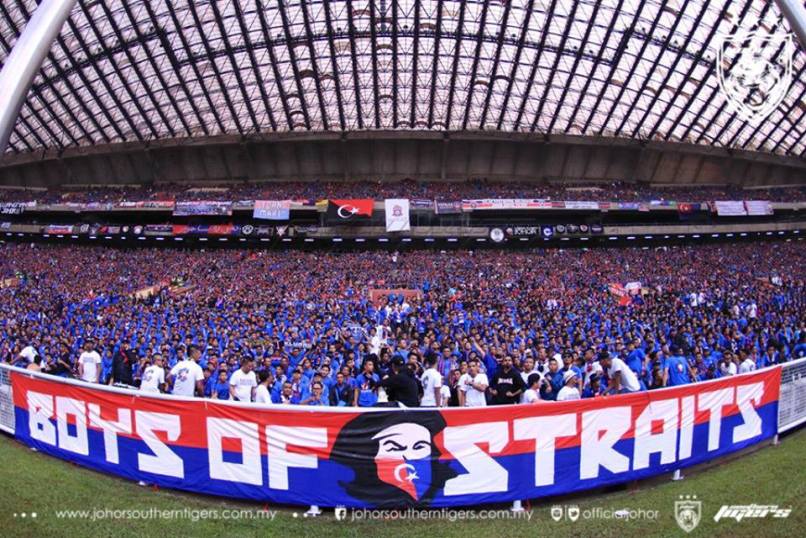
MULTITUDE OF STADIUMS
Having a multitude of stadiums is another longer-term formula to success. Pasir Gudang Corporation Stadium, a multi-use stadium which has both an indoor stadium within its compound, with a maximum capacity of 15,000, is currently used mostly for football matches, serving as the home stadium to JDT II in the Malaysia Premier League, President’s Cup, and recently, for Harimau Muda ‘B’ in the S-League.
University Stadium, an outdoor football stadium on the south campus of the University Teknologi Malaysia, Skudai, is the home field of the JDT III & IV. The stadium opened in September 2011 and currently has a seating capacity of 39,224. The natural grass playing field runs in the traditional north-south configuration and sits at an elevation of 1,554 m above sea level.
The Kejora Stadium, Bandar Penawar, opened in September 1998 by Lembaga Kemajuan Johor Tenggara (Kejora), is the home field of the JDT V.
Edwards says: “TMJ is big on making sure the players and coaches have the best working environment both on and off the park, this goes right to the junior levels. The best venues are strictly reserved for the best players.
“For example, the new training facility at Padang Seri Gelam is simply world class and the only team that trains there is JDT I. The training field is like a bowling green and the equipment is ultra-modern. All the players from our academy, all the way to JDT II, aspire to one day be able to train there.
“It’s clear to the players and coaches that they must rise to the occasion, towards the mission and vision of JDT, which is to make continuous improvements for which they will be rewarded with the best facilities and infrastructure in South-east Asia.
“Yes, this will spur everyone to make it to that elite grade so that they can experience the world-class stature. This is the singular motivation we offer to the players.”
Padang Sri Gelam must rank as the “jewel” of a state-of-the-art training ground, over an 8,000-square-metre training vicinity. It’s the first world class football training facility ever built in Malaysia and the first of its kind in South-east Asia.
Besides the indoor synthetic field measuring 16m by 109.2m, the high-tech sports building comes with the latest gym equipment, a swimming pool and ice baths similar to those available at European clubs for the players’ usage. It’s perfectly tuned to the vision of Tunku Ismail, who wants international-level training fields and equipment for the players and to help those who are injured to recover faster.
“The training pitches and overall infrastructure throughout the club is compatible with the highest of FIFA requirements. This is a special gift by Tunku Ismail to the younger generation of Johorean players and coaches to reach global standards,” said Edwards.
It was named Dato Suleiman Mohd Noor Indoor Training Centre as a special recognition and appreciation for his contribution as the “Father of Johor Football” in February 2016. It was officially opened on April 21 2016.
Edwards, who is now into his second year back in Johor, says he has been fired up to deliver the world-class best. He says: “The only concern that I see is we’re progressing at a really quick rate compared to our local rivals. The training facilities, the way we’re playing, the way we’re moving forward. But overall, I’m very excited and I’m just waiting for the next state or franchise to follow suit.”
ROYAL FAMILY
He salutes the Johor royal family for making a reality a world-class football infrastructure in the southern-most Malaysian state. He says: “A lot of people don’t see the stuff TMJ really does with the fans, providing them office space, allowing them to start their own business, providing them with buses and other support.
“They don’t see things like when we have small events at his house. The Prince is even cooking the barbecue and there are 15-20 people from the Boys of Straits (the supporters’ club) there. He’s cooking the steak!
“It’s easy to invest money into signing a foreigner who is going to give you a photo opportunity. That’s what it appears to me that a lot of our competitors are doing. But I’m waiting for the day where someone puts that money into state-of-the-arts infrastructure, starts a world-class academy and build a serious long-term foundation like we’re in the process ofdoing here.”
“Some people say that the success and what’s happening here at JDT is due to having the finances, but having financial support is only a part of the equation. Look at the amount of money invested into Pahang and Selangor football over the years, we are talking millions and millions, but look at where they are after all this financial support compared to JDT. There is a massive difference in the philosophy and vision of TMJ compared to the approaches from within other states in Malaysian football.”
Having taken a leaf from the best football institutions the world over, JDT wants to be a global ambassador with the longer-term vision of developing regional football. They’ve developed strategic partnership and collaborations with Borussia Dortmund (Germany), Hokkaido Consadole Sapporo (Japan) and Valencia (Spain).
The senior team has just embarked on a pre-season training camp in Thailand where they will be hosted by Buriram FC, the team from Thailand who share very similar ideas to the way professional football should operate. Besides signing new young players for development, JDT has been organising competitive leagues and tournaments across every age group and in the Johor districts to ensure all year-round football.
Edwards says: “People from Japan, Singapore, Thailand, Australia, South America and Europe are looking to establish relationships with us. My hope is that other clubs in Malaysia and the region must be willing to move forward in a similar way we have at JDT as we don’t want to be looking down and everyone is too far behind. It needs to happen. It’s important for JDT, it’s important for Johor and Malaysia, too.”
What a long overdue sensation: Singaporeans and Malaysians will now be fired up by this JDT-branded football revolution.
World-class “bola” has finally come to our backyard, courtesy of a dream-come-true bondship between a sporting prince and an Australian football guru, who staunchly believe in long-term youth development as the pathway to longer-term success.
Tomorrow in JDT Part II: The Johor professionalism in football.
- Suresh Nair is a Singapore-based journalist, who together with former Singapore coach Jita Singh, was invited on January 5, by Alistair Edwards to view the world-class JDT football revolution in Johor.










